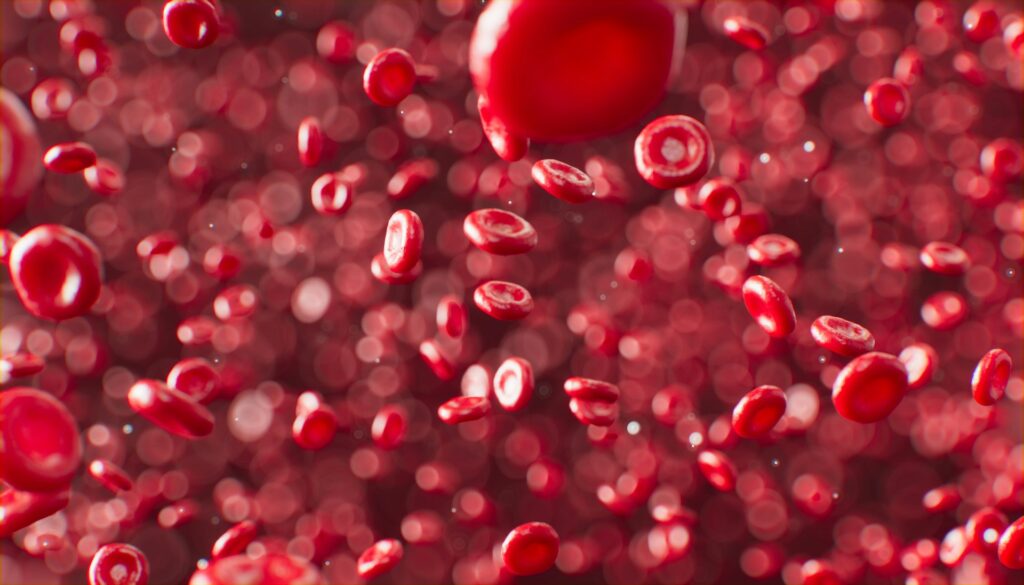Professor Stefanie Dehnen, head of the Institute for Inorganic Chemistry at the Karlsruhe Institute of Technology (KIT), and her research team have successfully synthesized and stabilized a five-atom bismuth ring molecule; known as Bi₅⁻; resolving a chemical mystery that has puzzled scientists for decades. This achievement not only fills a gap in fundamental chemistry but also opens new opportunities for research in catalysis, materials science, and electronics.
Rienmüller, J., Peerless, B., Paul, S., Bruder, F., Wernsdorfer, W., Weigend, F., & Dehnen, S. (2025). Isolation of a planar π-aromatic Bi5− ring in a cobalt-based inverse-sandwich-type complex. Nature Chemistry, 17(4), 547–555. https://doi.org/10.1038/s41557-024-01713-8
The Bi₅⁻ ring represents the heavy-element counterpart to the well-known cyclopentadienyl anion (C₅H₅⁻), a cornerstone molecule in organometallic chemistry. Researchers have long hypothesized that heavier analogues could exhibit aromatic properties; stable electron arrangements that give molecules exceptional resilience and reactivity. However, synthesizing such heavy-element rings had proven elusive until now.
Professor Stefanie Dehnen from Karlsruhe Institute of Technology (KIT) stated,
“By synthesizing the Bi5; ring, we’ve answered a long-standing question of basic research. In the future, this molecule could play an important role in the development of new materials and chemical processes.”
Dehnen’s group, working with Dr. Julia Rienmüller, Dr. Benjamin Peerless, Sagar Paul, Florian Bruder, Professor Wolfgang Wernsdorfer, and Professor Florian Weigend, managed to isolate a planar, π-aromatic Bi₅⁻ ring within a cobalt-based inverse-sandwich complex. Their success demonstrates that even the heaviest elements can form stable aromatic structures with delocalized electrons, similar to their lighter carbon-based relatives.
The synthesis involved an innovative combination of inorganic chemistry techniques. The team reacted a polybismuthide precursor with a cobalt-carbene compound in a controlled solvent environment, producing a complex in which the Bi₅⁻ ring sits between two cobalt centers. Analytical methods including magnetic measurements and quantum-level simulations confirmed both the structure and the aromatic behavior of the molecule.
What makes this discovery significant is its potential impact. Bismuth, though heavy, is a non-toxic element with promising properties for use in sustainable materials and chemical reactions. Stabilizing a Bi₅⁻ ring could lead to new catalytic systems or electronic materials that leverage its unique electronic structure and mass. The findings also illustrate how theoretical chemistry, precision synthesis, and advanced computation can work together to realize molecules that were once only imagined.
Dehnen emphasized that the project underscores the importance of fundamental research. By answering a long-standing scientific question, her team has created a foundation for exploring entirely new classes of compounds. Future research will focus on refining synthesis pathways, testing the reactivity of bismuth-based rings, and applying machine learning methods to accelerate discovery.
While this achievement primarily advances the understanding of chemical bonding and aromaticity, it may eventually contribute to practical technologies. The structure’s stability and electronic characteristics could inspire new designs in molecular electronics, catalysis, or energy-efficient materials.
For now, the successful synthesis of the Bi₅⁻ ring stands as a milestone in heavy-element chemistry. It reminds the scientific community that even long-pursued questions can yield breakthroughs with persistence, collaboration, and innovation—qualities that continue to define modern chemical research.

Adrian graduated with a Masters Degree (1st Class Honours) in Chemical Engineering from Chester University along with Harris. His master’s research aimed to develop a standardadised clean water oxygenation transfer procedure to test bubble diffusers that are currently used in the wastewater industry commercial market. He has also undergone placments in both US and China primarely focused within the R&D department and is an associate member of the Institute of Chemical Engineers (IChemE).



